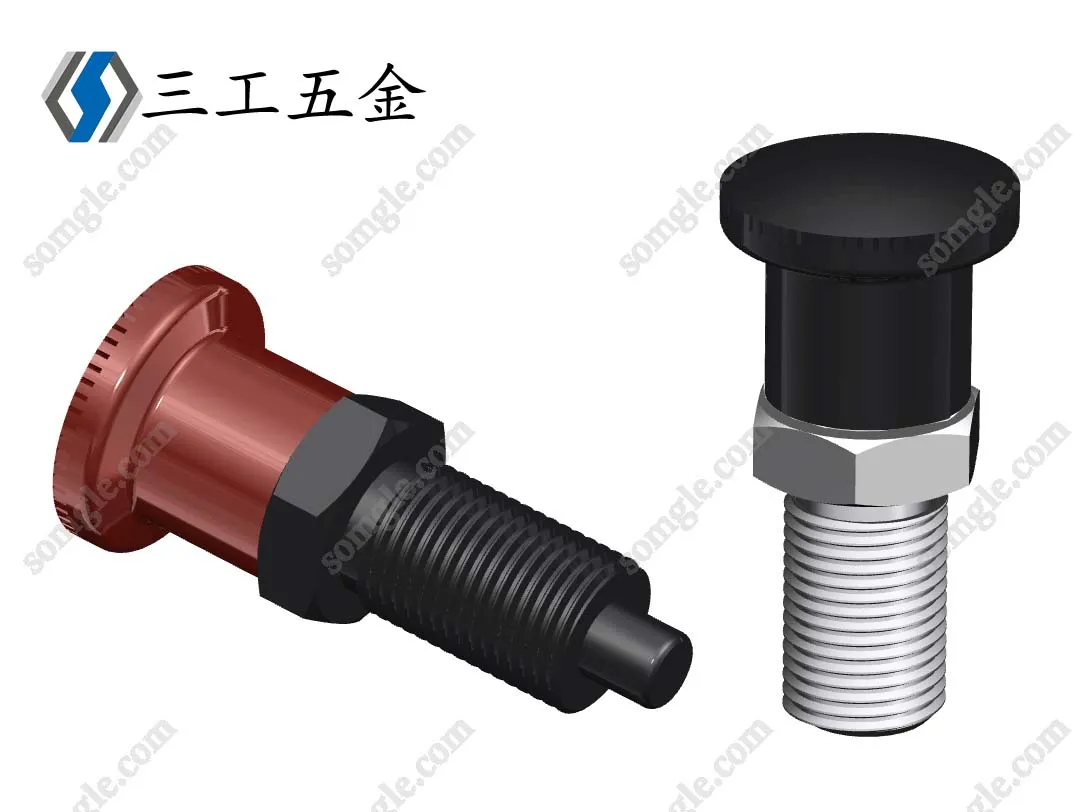Threaded Inserts for Plastic and Aluminum: Strengthening Threads in Lightweight Materials

When working with plastic housings, aluminum enclosures, or composite materials, one common challenge engineers face is the weakness of tapped threads. Repeated fastening can easily result in stripped threads, loose joints, or product failures.
That’s where Threaded Inserts come into play.
In this article, Dongguan Sango Hardware Fasteners Co., Ltd. explains everything you need to know about threaded inserts—what they are, how they work, where they’re used, and how to choose the right one for your application.
1. What Is a Threaded Insert?
A Threaded Insert is a metal sleeve—internally threaded—that’s installed in softer materials like plastic or aluminum to create a durable, high-strength thread.
Inserts help solve common fastening issues:
- Preventing thread stripping
- Allowing repeated assembly and disassembly
- Distributing load stress evenly
- Providing secure fastening in thin-walled components
2. Types of Threaded Inserts
🔹 Heat-Set Threaded Insert
- Installed using a heated tool or ultrasonic welder
- Commonly used in thermoplastics (ABS, PC, PP)
- Excellent retention and torque resistance
🔹 Press-Fit Insert
- Installed by simply pressing into a pre-molded hole
- Suitable for plastic, soft metals, or wood
- No tools or heat required
🔹 Self-Tapping Insert
- Has cutting threads for direct installation into materials like aluminum or wood
- Does not require pre-threading
- Available in slotted or knurled designs
🔹 Rivet Nut / Blind Insert
- Installed in sheet metal using rivet nut tools
- Ideal for thin aluminum enclosures
- Available in round, hex, and countersunk styles
🔹 Stainless Steel Insert
- For environments with moisture, corrosion, or hygiene requirements
- Used in medical, food processing, and marine equipment
3. Key Applications of Threaded Inserts
- Plastic enclosures for electronics
- 3D-printed parts needing reusable threads
- Aluminum heat sinks or housings
- Wooden furniture and cabinets
- Medical device assemblies
- Consumer electronics shells and wearable devices
Sango Hardware manufactures threaded inserts in brass, stainless steel, carbon steel, and aluminum—with or without flange, knurled, slotted, or smooth-body styles.
4. How to Choose the Right Insert?
| Material | Recommended Insert Type | Installation Method |
|---|---|---|
| Thermoplastics (ABS, PC) | Heat-set or press-fit inserts | Heat or ultrasonic insertion |
| Aluminum alloys | Self-tapping or rivet nuts | Screw-in or pull-riveting |
| Wood or MDF | Coarse-threaded brass insert | Direct screwing |
| Sheet metal | Blind rivet nuts | Rivet gun / hydraulic tool |
| Cleanroom applications | Stainless steel press-fit | Press-in + clean packaging |
Factors to consider:
- Thread size (M2–M12 or custom)
- Body diameter and length
- Flange presence
- Retention features (knurling, slots, ribs)
- Surface treatment (nickel plating, passivation, black oxide)
5. Case Study: Upgrading Plastic Assembly Threads
Client: North American smart device brand
Issue: Plastic casing threads were stripping during customer maintenance, increasing return rates
Sango Solution:
- Designed M3 brass heat-set inserts with anti-rotation knurling
- Delivered 50,000 units/month with tight tolerance control (±0.02mm)
- Provided heat insertion tooling guidelines
Result:
- Return rate dropped by 78%
- Product support team reported faster repair turnaround
- Inserts now integrated across three product lines
6. Why Choose Sango Hardware for Threaded Inserts?
🛠 In-house CNC machining and cold forming
We manufacture threaded inserts in multiple materials and finishes—no third-party outsourcing.
📐 Custom Designs Supported
Need a non-standard flange, thread, or body shape? We’ll help with design and prototyping.
🧪 100% Quality Inspection
Each batch is inspected for thread accuracy, roundness, pull-out strength, and plating adhesion.
📦 Export-Ready with Full Documentation
RoHS-compliant, English datasheets, REACH declaration, custom packaging and labeling for global markets.
7. Conclusion: Small Part, Big Impact
Threaded inserts are the unsung heroes of reliable assembly—invisible to the end-user, but essential for long-term product durability.
If you're:
- Struggling with stripped threads
- Designing housings from plastic or aluminum
- Looking to scale production with repeatable, reliable fastening
Contact Dongguan Sango Hardware Fasteners Co., Ltd., and let’s build your ideal insert solution together.